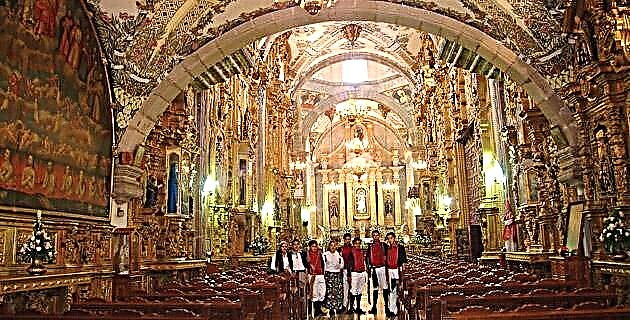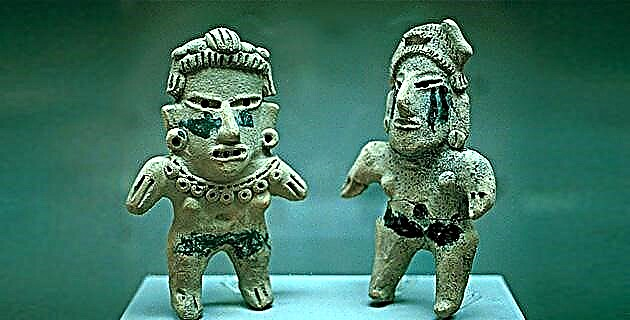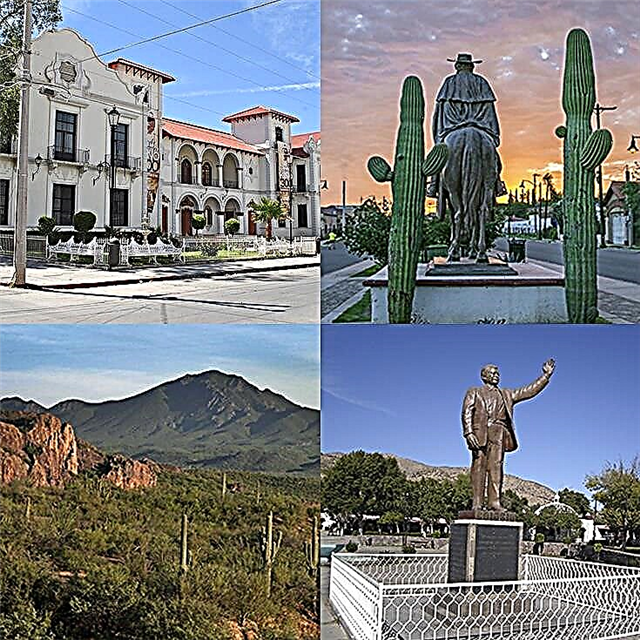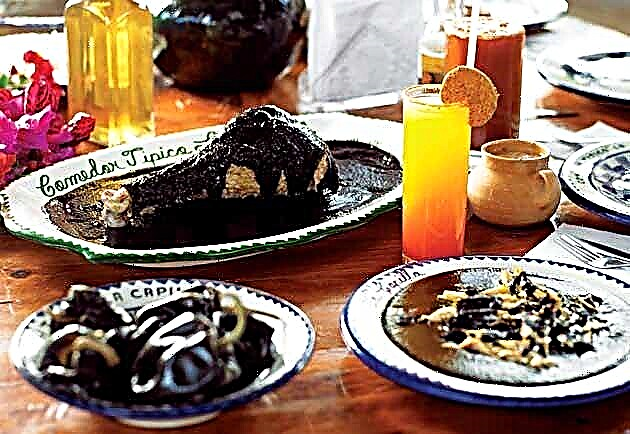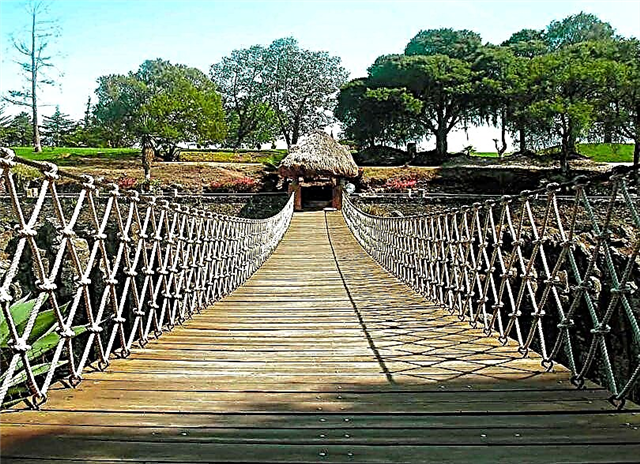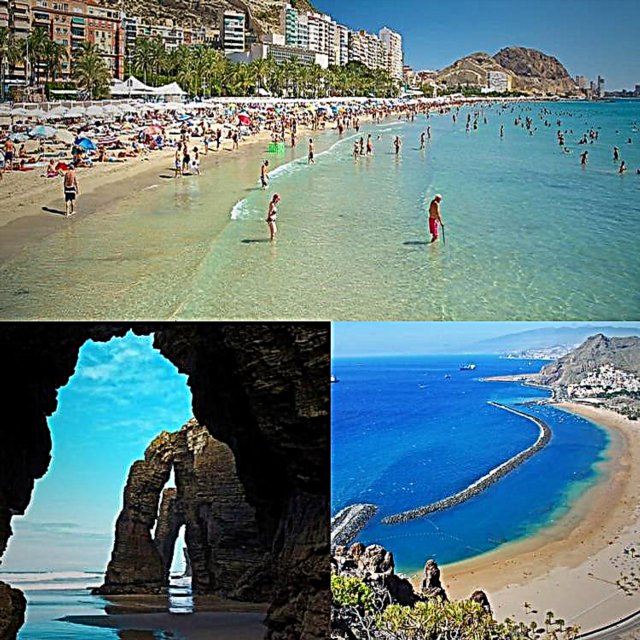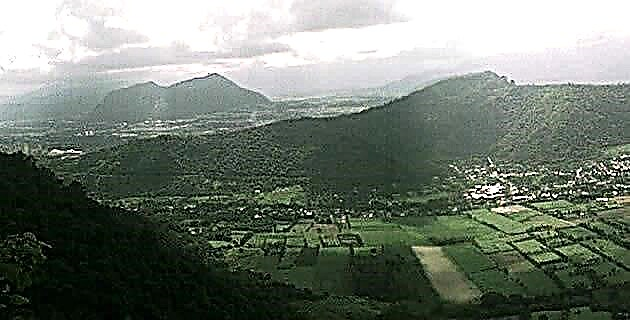
In our country there are small sites, whose vegetation and fauna are richer than those observed in large areas of other latitudes. We can say that there is an ideal microclimate for the development of unique species, some of which have possibly disappeared in other parts of Mexico.
The town that gives the valley its name has in its central part a sugar mill and a gas station. Starting from them —and not from a church, as in other towns— the houses are distributed among a mosaic of fields planted with coffee, banana, sugar cane and chayote. This was, until recently, a prosperous town where everything seemed to be at hand: crystal clear water, fruit trees and the shade of coyolera palms.
Several species of saurians have developed in the valley. One of them has been of special interest: the Xenosaurius Grandis. Finding it is not difficult, as long as we have the help and kindness of people like Don Rafael Julián Cerón, with whom that morning we walked towards the slopes of an impressive hill that dominates the valley, as if he were its guardian. We thus reached a slope where large rocks protruded from the ground: we were in the lands of the xenosaurus. The mountain range has elevations that belong to the Chicahuaxtla, a name given to a hill whose peak is at 1,400 meters above sea level, the waters of which can be seen, on clear days, from the summit. Its name means "rattle", perhaps recalling the chicauaztli, a staff used by pre-Hispanic priests.
Along with the saurians, there are other endemic reptile and batrachian species in the valley, which have attracted zoologists from around the world since the beginning of this century. These are unique specimens, such as the salamander known as linea (Lineatriton Lineola) and a very small species of frogs, which the locals consider to be the smallest in the world. In addition to the xenosaur, we will mention other saurians of the valley, such as the bronia (Bronia Taeniata) and the best known teterete or querreque (Basiliscus Vittatus). The first of them is part of the genus Gerhonotus and can measure up to 35 centimeters. It lives in trees and bushes, where it feeds on insects and small vertebrates. The male has a fold in the middle of the throat, the color of which changes rapidly according to the mood of the animal. In the mating season, they tend to raise their heads and show very striking tones in this scaly skin, which attracts females. They are aggressive if disturbed, but despite being close relatives of the Heloderma (Gila monster), they are not poisonous and their bite has no consequence other than severe pain, unless neglected and infected. The bronia has a certain mimicry; to protect itself it changes colors according to the environment. It has diurnal habits and lays its eggs on the ground, where they are covered and abandoned. The hatching comes two months later.
The case of the teterete is very interesting, since this saurian, from the Iguánidae family and from the Basiliscus genus (of which there are several species in Mexico) really walks on water. It is perhaps the only animal in the world that can do it, which is why the English language is known as Jesus alligator. It achieves this thanks, not so much to the membranes that join the toes of its hind legs, but due to the enormous speed with which it moves and the ability to move upright, leaning on its hind limbs. This allows it to move over pools, estuaries and even in the currents, not very strong, of the rivers. Watching it is quite a show. Some species are small, 10 cm or less, but others are more than 60 cm. Their ocher, black and yellow colors allow them to blend in perfectly with the vegetation on the banks of rivers and lagoons, where they live. They eat insects. The male has a crest on the head, which is very sharp. Its front limbs are much shorter than its hindquarters. They can appear climbing in trees and, if necessary, they are excellent divers who stay underwater for long periods, until their enemies disappear.
Rafael and his boys peer into the cracks in the stones, they know they are the lairs of the xenosaur. They do not take long to locate the first of these reptiles. With diurnal habits, they are very jealous of their territory, for which they frequently fight each other. Unless they are mating, no more than one is seen per crack. They are solitary and feed on mollusks and insects, although they can sometimes eat small vertebrates. Their threatening appearance has caused the peasants to kill them. However, Rafael Cerón tells us while holding one in his hand, far from being poisonous, they do a lot of good, since they kill harmful insects. They are only aggressive if disturbed and even though their teeth are small, their jaws are very strong and can inflict a deep wound that requires attention. They are oviparous, like most saurians. They can measure up to 30 cm, they have an almond-shaped head and the eyes, very red, are the first thing that notices their presence when we look into the shadows of a cavity.
Within the reptile group, the saurian suborder has animals that have survived with relatively little change from remote times, some from the Cretaceous era, some 135 million years ago. One of their main characteristics is that their bodies are covered in scales, a horny lining that can be renewed several times a year by shedding. The xenosaurus has been considered a living copy, in small, of the Eriops, whose remains indicate that it lived millions of years ago and whose volume greater than two meters cannot be compared to that of its current relative. Curiously, the xenosaur does not inhabit the desert areas of northern Mexico like its cousins that live in the states of Chihuahua and Sonora, among which is the Petrosaurus (rock saurian), which looks very similar. On the contrary, its habitat is very humid.
The only enemies of the saurians of the Cuauhtlapan Valley are birds of prey, snakes and, of course, man. Not only do we find people who capture and kill them for no reason, but the industrialization of the neighboring valleys of Ixtaczoquitlán and Orizaba presents the greatest danger to the fauna and flora of Cuauhtlapan.
The region's paper company dumps its contaminated sludge onto fertile soils inhabited by hundreds of species, thus destroying their habitat. In addition, it discharges foul waters into streams and rivers where puppets face death. With the complicity of the authorities, life loses ground.
The birds were already announcing the night when we left the Cuauhtlapan Valley. From the viewpoints that surround it, it is difficult to transfer the imagination to past times, when we look down at the places inhabited by xenosaurs, bronias and teteretes; then we can think of a Cretaceous landscape. For this we had to look for one of the already rare places where it is still possible to do it; we had to flee from chimneys, quarries, dumps of toxic substances and drains. Hopefully in the future these places will increase and we hope that the trend towards their total elimination will be reversed.
IF YOU GO TO THE VALLE DE CUAUHTLAPAN
Take highway no. 150 towards Veracruz and after crossing Orizaba, continue through it to Fortín de las Flores. The first valley you see is the Cuauhtlapan Valley, which is dominated by the Chicahuaxtla hill. You can also take highway no. 150, pass the city of Puebla and at the second junction to Orizaba, exit. This road takes you directly to the Cuauhtlapan Valley, which is about 10 km from the deviation. The condition of the road is excellent; however, in the valley many of the roads are dirt roads.
Both Córdoba, Fortín de las Flores and Orizaba have all the services.
Source: Unknown Mexico No. 260 / October 1998

